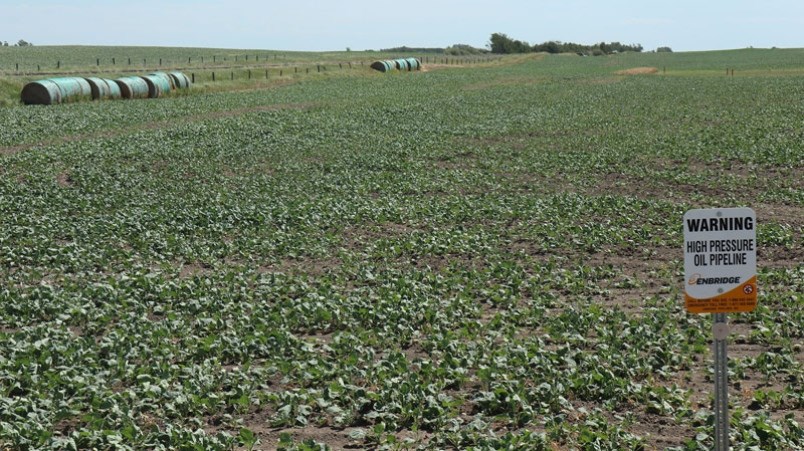Enbridge’s newly constructed Line 3 replacement pipeline (L3RP) runs for 1,070 kilometres in Canada, from Hardisty, Alta., to the Manitoba-North Dakota border near Gretna.
It crosses nearly 2,200 parcels – encompassing farm land, numerous creeks and wetlands, and larger water bodies like the �鶹��Ƶ Saskatchewan and Souris rivers.
The Canadian portion of the new pipeline has been in service since December 2019 and most of the land along the project right-of-way (ROW) has already been returned to a pre-construction state.
Reclamation this season includes a stretch of some 110 kilometres in southeastern Saskatchewan and southwestern Manitoba (construction spreads 5, 6 and 7, from around Kipling to west of Glenboro) that could not be completed last year before the arrival of early wet and cold weather.
“Our promise is to restore the pipeline right-of-way to as good or better condition than it was before construction, and to minimize the long-term impact to the land along our pipelines,” says Allen Sawatzky, manager of construction for the L3RP.
Banister Pipelines is overseeing a crew of about 280 workers. Work began in mid-June out of a main base in Moosomin and a satellite office in Brandon.
A critical component of right-of-way reclamation involves working with landowners, from the outset of a project, to reach agreement on property-specific items that will be addressed during and after construction.
During excavation for the pipeline, topsoil was separated from the subsoil to ensure the land remains productive for agricultural purposes after construction. The land was re-contoured to maintain drainage patterns, hay land and native prairie areas reseeded, cultivated land prepared for planting, and wetlands and watercourses stabilized and revegetated to prevent erosion and ensure habitat is restored for the many plants and wildlife along the line.
“We straw crimp, seed, and monitor the right-of-way until vegetation is re-established,” said Sawatzky. “In some cases, we also work with landowners and environmental agencies to enhance restoration, such as planting trees along streams or managing invasive species.”
Enbridge generally maintains the permanent right-of-way free of structures, trees and shrubs so the pipeline is visible during aerial inspections and accessible in the case of an emergency.
In mid-April, task-specific crews were already being deployed in other parts of the L3RP ROW, beginning what Enbridge refers to as ‘deficiency-warranty work’ – activities such as repairing ditches, fences, gates and signs, re-seeding areas of slow growth and adding straw crimping for erosion control in areas where the previous covering had seen stress with a strong spring wind.
“We are always monitoring the right-of-way, particularly during and after spring breakup,” explains Sawatzky.
This means keeping an eye out for new weed infestations along the ROW.
Weather permitting, the final L3RP is expected to be completed in the fall.
Sawatzky says, “As I like to say: ‘If you can’t combine, you probably can’t pipeline.’”




